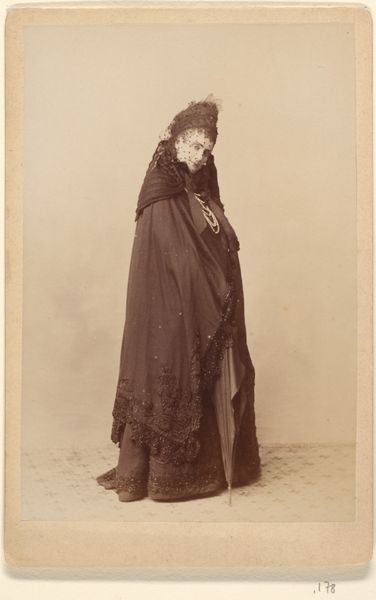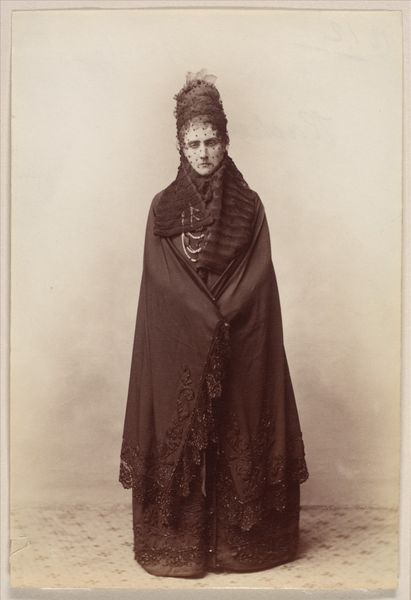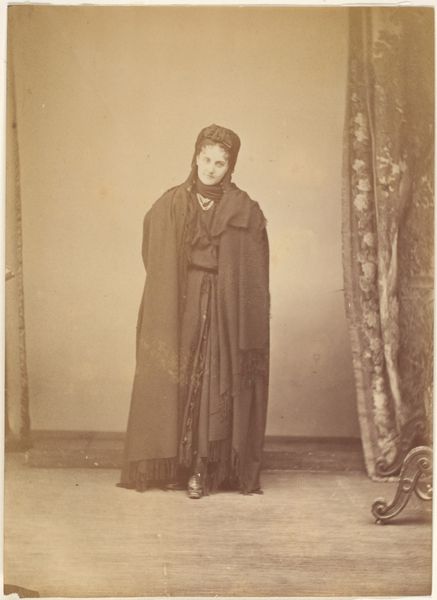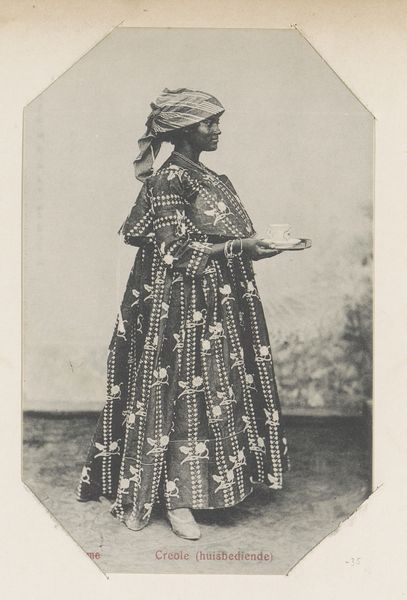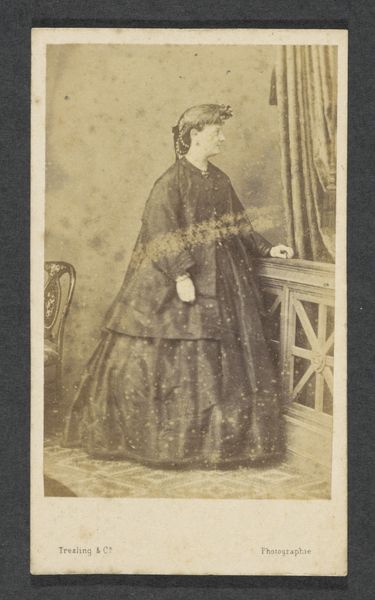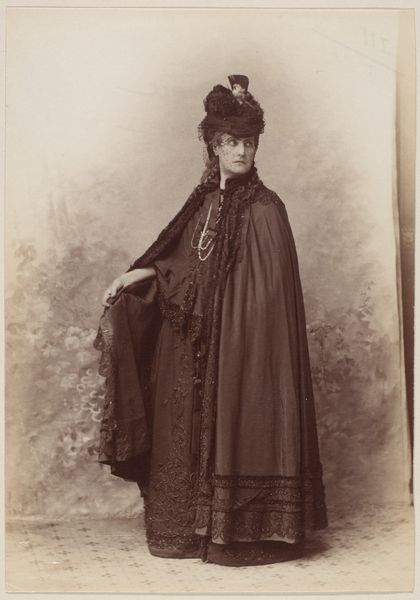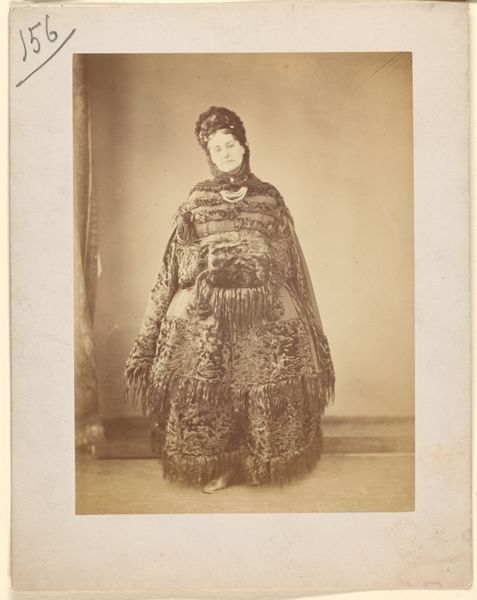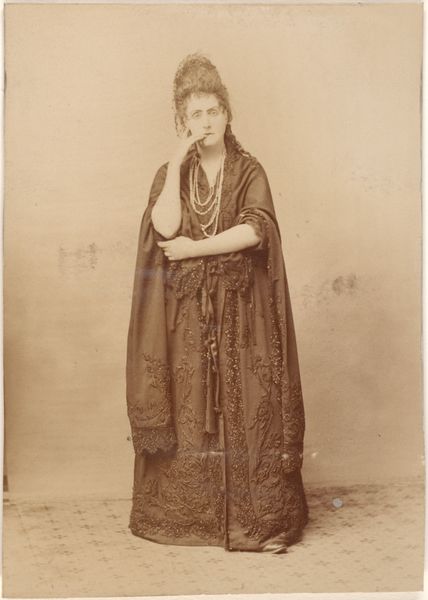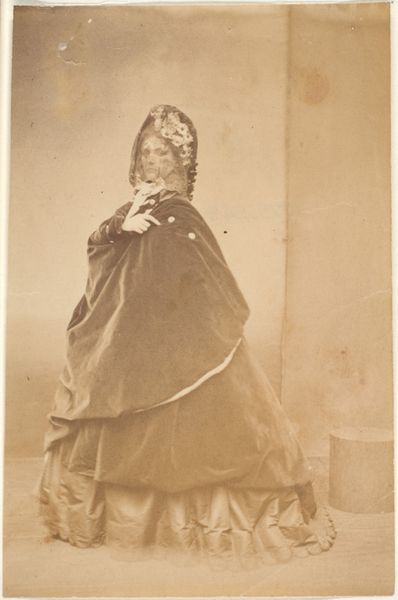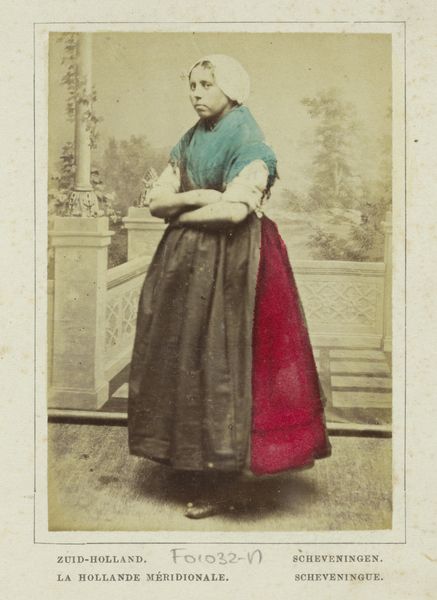
daguerreotype, photography
#
portrait
#
daguerreotype
#
archive photography
#
photography
#
historical photography
Copyright: Public Domain
Editor: Here we have "Les dernieres," a daguerreotype created by Pierre-Louis Pierson in the 1860s. It has such a strangely theatrical air. Almost dreamlike, wouldn't you say? How do you interpret this work within its historical context? Curator: Well, given that it was taken in the 1860s, likely during the Second Empire in France, we have to consider photography's developing role. Pierson became the official photographer of Countess de Castiglione, Napoleon III's cousin. This context shapes our understanding, moving from a purely artistic realm to a documented record of social status. The theatricality you mention speaks to how people, especially within court circles, presented themselves for public consumption. How do you think photography affected perceptions of royalty? Editor: It’s interesting how you bring up photography's role during the Second Empire. It challenges the conventional idea of art for art's sake. The subject almost feels like a mannequin, a posed display of wealth, amplified by the emerging medium. Is that a typical intention for photography at that time? Curator: Certainly, this wasn't photography capturing spontaneous moments. The photograph served as a political tool as well as documentation, reinforcing the ruling class’s imagery and dominance. These portraits were carefully constructed narratives. Is this different from portraits painted of royalty at the same time? Editor: So, analyzing this piece allows us insight into how power structures utilize art? It reflects society and also reinforces social norms. That makes the work feel less about the individual and more about what they represent. Curator: Precisely. What do you find most compelling about the intersection of photography, portraiture and the historical forces it reflects? Editor: I think the photograph complicates the boundary between art and historical document, and that intersection forces you to be aware of who and what shaped its production. Thanks! I've learned a lot! Curator: Likewise. A valuable perspective, thank you!
Comments
No comments
Be the first to comment and join the conversation on the ultimate creative platform.
